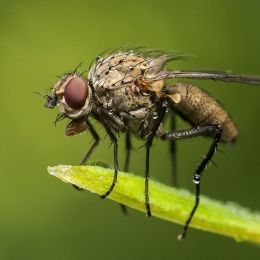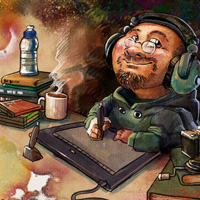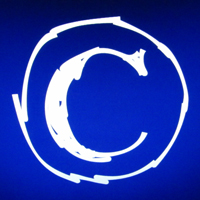- photo contests ▼
- photoshop contests ▼
- Tutorials ▼
- Social ▼Contact options
- Stats ▼Results and stats
- More ▼
- Help ▼Help and rules
- Login
Tutorials from feeblemind.tuxfamily.org (page 1)
feeblemind.tuxfamily.org has 11 tutorials published on pxleyes...
1 - Making a Rain Effect - Blender Tutorial
2 - Material Indice - Blender Tutorial
3 - More About Reflections - Blender Tutorial

In the past, Blender used EnvMaps (environmental maps) in order to simulate the reflectiveness of objects. But this way was quite difficult, needing the use of Empties (null objects) and layers when a simple reflecting plane was needed. Fortunately, including Raytracing into the renderer eased the whole process and helped to achieve a greater realism.
submitted: 5 years and 3852 days ago
4 - Transparency Effects - Blender Tutorial

Transparency and light refraction within a transparent material are key parameters in order to get a realistic rendering of a material like solid glass. This tutorial doesn't help with getting caustic spots, which is beyond the reach of the actual version of Blender without using an external renderer like Yafray.
submitted: 5 years and 3852 days ago
5 - Using Texture Stencils - Blender Tutorial
6 - Simple Animations - Blender Tutorial
7 - Using the SubSurface Scattering Script - Blender Tutorial
8 - Normal Maps - Blender Tutorial

Bump mapping is a well known but old technique for faking 3d reliefs. The relief information is stored in a gray-scale image. But a new and very popular method in the 3D game industry offers to store the relief information in a RGB image, increasing the precision and, obviously, the realism of fake reliefs on your 3D models: Normal mapping. This short tutorial is about showing you how to build your own Normal maps without expensive tools, and of course how to use them.
submitted: 5 years and 3852 days ago
9 - Vector Blur Usage - Blender Tutorial

The messages on Blender forums and boards are countless about smoothing problems. Most of the time, the users report black blotches on the surface of their models, while using the Set Smooth on them. This article is not a tutorial. It's more a discussion, a collection of observations and know-how. It is intended for beginners, but seasoned users could also find it valuable in their own attempts (as resource or reference) to help beginners. Isn't the community about helping each other, after all?
submitted: 5 years and 3852 days ago
10 - Tangent Space Normal Maps - Blender Tutorial

Normal maps have become very popular these last few years, shown as a large improvement in the Game Industry but also in more traditional CG Industry and in the movie Industry, even if less obviously. Nowadays, solutions to sculpt models to an incredible level of detailing exist (ZBrush, Mudbox but also our beloved Blender, with its now famous Sculpt mode) but building normal maps to enhance the surfaces of our Blender models is still somehow lacking. Blender now has the capability to bake Camera Space Normal Maps directly from a higher level of resolution and apply it to a lower level of resolution, thanks to UVmapping and the Multi-resolution meshes. But the very last step, the one which will bring Blender up to the standards is still missing) : Tangent Space Normal Maps. If Blender now supports these maps, it still doesn't know how to bake them.
submitted: 5 years and 3852 days ago











